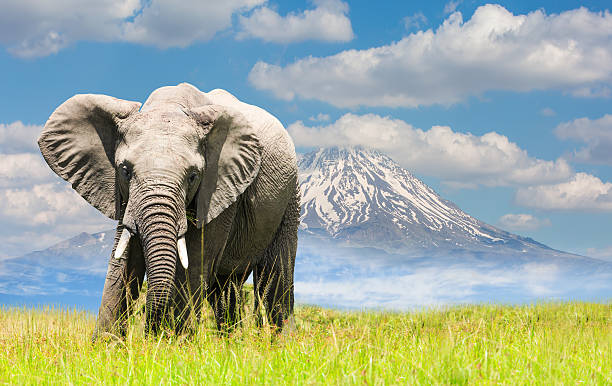Discover the Best of Tarangire Park Tanzania: A Safari Experience

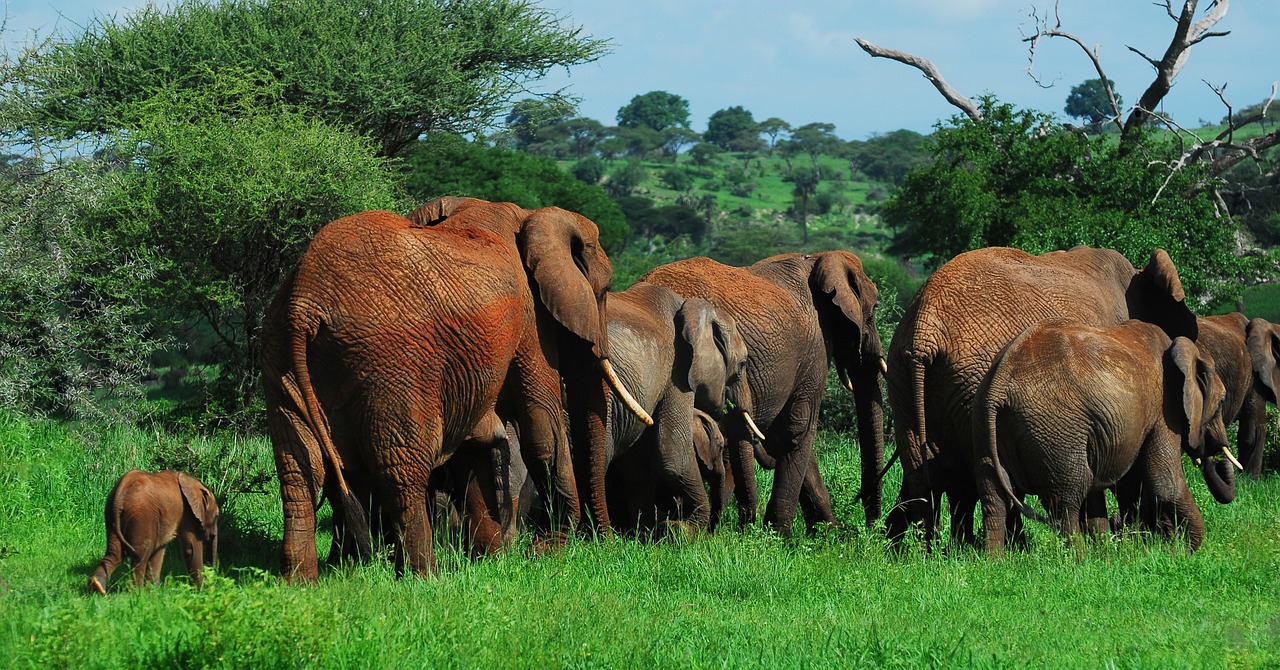
Imagine a landscape dotted with ancient, colossal baobab trees, their mythic silhouettes standing sentinel over sun-drenched savannahs. Picture vast herds of elephants, their gentle rumbling a constant soundtrack to the African bush. This is Tarangire National Park, a jewel of northern Tanzania and an essential stop on any authentic Tanzania safari itinerary.
Known for its incredible density of wildlife, especially during the dry season, and its unique, baobab-adorned landscape, Tarangire offers an unforgettable adventure into the wild heart of Africa.
This comprehensive guide delves into everything you need to know to plan your visit. We’ll explore the remarkable wildlife, the best times to visit, the thrilling activities like game drives and hot air balloon rides, and the range of accommodation options available in and around Tarangire Park, Tanzania.
Discovering Tarangire National Park
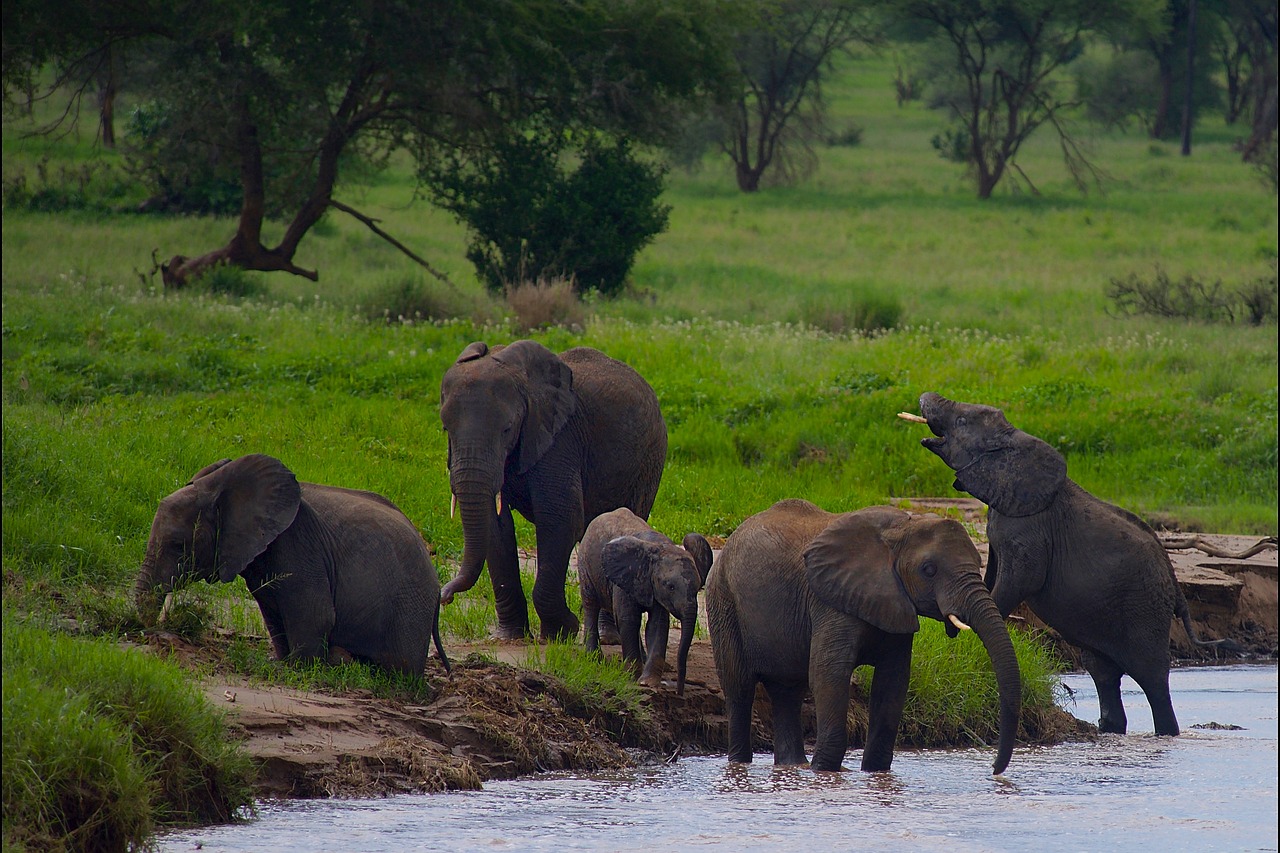
Sprawling across approximately 2,850 square kilometers of grassland and floodplains, Tarangire National Park is the sixth-largest national park in Tanzania.
| Fact | Detail |
|---|---|
| Size | 2,850 km² |
| Region | Manyara Region, Northern Tanzania |
| Main River | Tarangire River (permanent river and primary source of fresh water) |
| Famous For | Elephants, baobabs, bird species, and classic safaris |
The park’s name originates from the Tarangire River, a permanent river that is the primary source of fresh water for wildlife during the annual dry season.
Its location near Lake Manyara, Ngorongoro Crater, and Serengeti National Park makes it ideal for inclusion in Tanzania’s Northern Safari Circuit.
The Spectacular Wildlife of Tarangire
Tarangire’s Famous Large Elephant Herds
If there is one animal that defines Tarangire, it is the elephant. The park is home to some of the largest elephant herds in Africa, often over 300 strong. Watching these giants bathe in the Tarangire River or dust themselves in red earth is one of Africa’s most iconic sights.
Predators and Other Mammals
Beyond elephants, Tarangire teems with life — lions, leopards, cheetahs, wild dogs, buffalo, giraffes, and huge herds of zebra and wildebeest.
During the dry season, animals concentrate along the riverbanks, creating some of the best wildlife viewing opportunities in all of northern Tanzania.
A Paradise for Birdwatchers
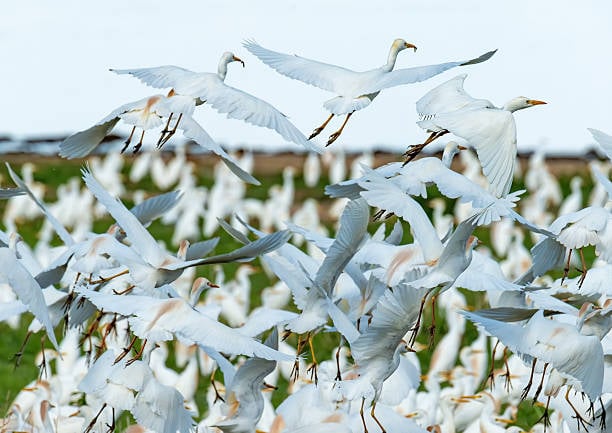
With over 550 bird species, Tarangire is a paradise for ornithologists. Rare and endemic species such as the ashy starling, rufous-tailed weaver, and yellow-collared lovebird make it one of Tanzania’s top birding parks.
| Highlight Bird Species | Habitat |
|---|---|
| Ashy Starling | Acacia Woodland |
| Yellow-Collared Lovebird | Baobab Forests |
| Rufous-Tailed Weaver | Savannah Grasslands |
The Unique Ecosystems of Tarangire
The rich biodiversity of Tarangire National Park is a direct result of its diverse and unique ecosystems.
The permanent Tarangire River is the heart of the park, creating a mosaic of habitats along its course. The landscape is characterized by its mixed acacia woodlands, seasonally flooded grasslands, and, most famously, its ancient baobab trees. These giant baobab tree specimens, some over a thousand years old, create a prehistoric and awe-inspiring atmosphere.
A crucial feature of the park is the Silale Swamp, located in the southern part of Tarangire. This vast wetland acts like a giant sponge, absorbing water during the wet seasons and slowly releasing it during the dry season. This process ensures a year-round water supply, supporting a high concentration of wildlife, including elephants, buffalo, and a host of predators.
The swamp's lush elephant grass provides excellent cover for lions and leopards, making it a hotspot for wildlife viewing.
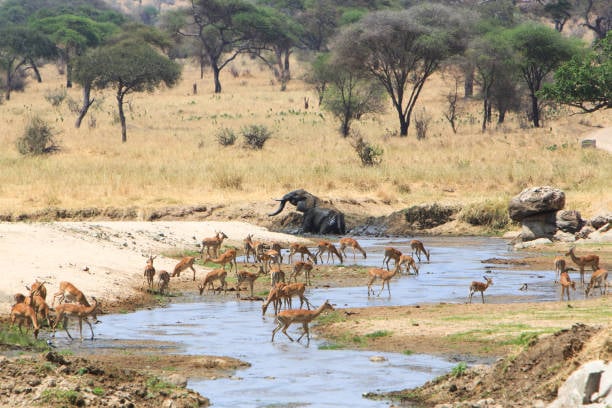
Best Time to Visit Tarangire National Park
Tarangire is a fantastic year-round destination, but the experience changes dramatically with the seasons. Understanding these differences is key to planning the perfect Tanzania safari.
Dry Season Highlights (June to October)
The dry season, from late June to October, is widely considered the best time for wildlife viewing in Tarangire National Park. This period sees the famous long distance migration within the Tarangire ecosystem. As seasonal water sources in the surrounding areas dry up, the annual dry season phenomenon occurs: thousands of wild animals are drawn to the permanent Tarangire River.
During these months, animals concentrate in huge numbers along the river banks, making for spectacular and easily accessible wildlife viewing opportunities. The vegetation is thinner, making it easier to spot animals from a distance. You can expect to see large herds of elephants, buffalo, zebra, and wildebeest, as well as the predators that follow them. This is the time when the park truly comes alive with dramatic wildlife interactions.
Wet Season Attractions (November to May)
While the dry season is prime for spotting large herds, the wet seasons (short rains in November-December and long rains from March to May) offer a different, equally enchanting experience. The landscape transforms into a vibrant, lush green paradise. This is the calving season for many species, a time to see newborn animals taking their first steps.
The wet season is also the best time for birdwatching, as migratory bird species arrive from Europe and North Africa, adding to the already impressive resident populations. While some roads may become challenging, the park is less crowded, offering a more intimate and serene safari experience. The surrounding wet season dispersal means animals spread out more, but the stunning scenery and avian life make it a rewarding time to visit.
Activities in Tarangire National Park
To truly explore the wonders of this national park, a variety of activities are available, each offering a unique perspective on its landscape and wildlife.
Game Drives
Game drives are the cornerstone of the Tarangire safari experience. Conducted in specially designed 4x4 vehicles with pop-up roofs, they allow you to cover vast areas of the park in search of wildlife. Morning and afternoon game drives are standard, as this is when animals are most active. An experienced guide will lead you to the best spots, sharing their knowledge of the animals and the ecosystem.
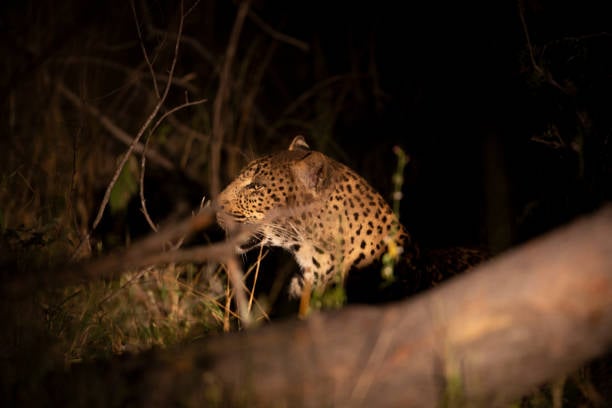
For a truly unique adventure, consider indulging in night game drives. Venturing out after dark reveals a whole new world of nocturnal creatures, from bushbabies and civets to aardvarks and hunting predators. These night safaris offer a thrilling and different perspective on the African bush.
Walking Safaris
To connect with the wilderness on a deeper level, a walking safari is an unparalleled experience. Accompanied by an armed ranger and a knowledgeable guide, you’ll leave the vehicle behind and explore the bush on foot. This activity allows you to focus on the smaller details of the ecosystem—the tracks, the plants, the insects—that you might miss from a vehicle. The thrill of encountering wildlife on foot is an unforgettable and humbling experience.
Hot Air Balloon Rides
For the ultimate panoramic views of Tarangire, a hot air balloon ride at sunrise is a must. Drifting silently above the savannah as the sun illuminates the landscape below is a magical experience. From this vantage point, you can appreciate the vastness of the park and spot large herds of animals moving across the plains. The ride typically concludes with a celebratory champagne breakfast in the bush, capping off a truly memorable adventure.
Cultural Visits
Enhance your safari by engaging with the local culture. Many lodges and tour operators can arrange cultural visits to nearby Maasai or Barabaig villages. This provides a fascinating opportunity to learn about the traditional lifestyles, customs, and ancient wisdom of the people who have coexisted with the region's wildlife for centuries.
Accommodation Options in Tarangire
Tarangire National Park and its surrounding conservation areas offer a wide spectrum of accommodation, from opulent luxury lodges to rustic tented camps and budget-friendly campsites.
Luxury Lodges
For those seeking the pinnacle of comfort, luxury lodges in Tarangire provide world-class service and amenities. Places like Tarangire Treetops offer unique accommodations built around massive baobab trees, providing breathtaking views. These lodges often feature swimming pools, fine dining, and expert guides for exclusive game drives, ensuring a pampered and unforgettable stay.
Tented Camps
Tented camps offer a perfect balance of comfort and immersion in the bush. These are not basic tents; luxury tented camps feature spacious canvas suites with comfortable beds, en-suite bathrooms, and private verandas overlooking the wilderness. Camps like Nimali Tarangire and Sanctuary Swala Camp allow you to fall asleep to the sounds of the African night without sacrificing modern comforts, offering an authentic yet comfortable safari experience.
Budget-Friendly Options
Travelers on a tighter budget also have excellent options. Whistling Thorn Tented Camp offers comfortable, no-frills accommodation at an affordable price point. Additionally, there are several public and private campsites inside and outside the park for those who wish to bring their own gear and enjoy a more rustic connection with nature.
Tarangire Safari Itineraries
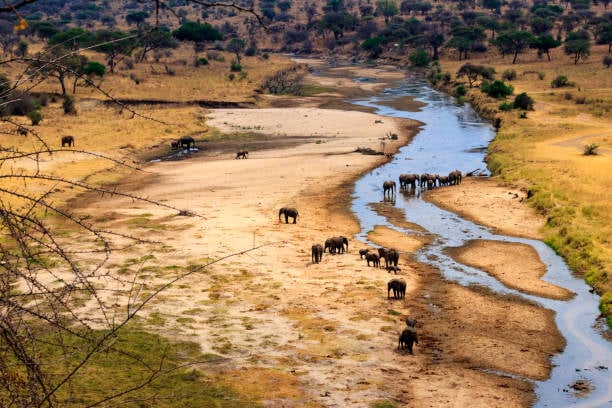
Tarangire’s location makes it a versatile component of various Tanzania safari itineraries. A typical visit might be 2-3 days, but its charms can easily hold your attention for longer.
Classic Northern Circuit (7-10 Days): A popular itinerary begins in Tarangire National Park for 2 days, followed by a visit to Lake Manyara National Park, then descending into the Ngorongoro Crater, and finally exploring the vast areas of the Serengeti National Park.
Family-Friendly Safari: Itineraries can be tailored for families, with lodges offering family suites and activities like shorter game drives and nature walks suitable for children.
Adventure Itinerary: Combine day and night game drives in Tarangire with a walking safari, followed by a climb up Ol Doinyo Lengai or a visit to Lake Natron for a more off-the-beaten-path adventure.
Luxury Itinerary: Spend several days at an exclusive lodge in a private concession, enjoying private game drives, hot air balloon rides, and gourmet bush dinners for a truly elite experience.
Nearby Attractions
Exploring the region around Tarangire adds incredible depth to your northern Tanzania safari.
Lake Manyara National Park
Just a short drive from Tarangire, Lake Manyara National Park is a compact but diverse park. Famous for its tree-climbing lions and the vast flocks of flamingos that fringe the alkaline lake, it offers a wonderful contrast to Tarangire's savannahs. The park's groundwater forests feel like a tropical jungle, providing a different environment to explore.
Ngorongoro Crater
A UNESCO World Heritage Site, the Ngorongoro Crater is a natural marvel. A massive, intact volcanic caldera, its floor is home to an astonishing density of wildlife, including the rare black rhino. A game drive inside the Ngorongoro Conservation Area is often a highlight of any safari, with incredible wildlife viewing against a stunning backdrop.
Serengeti National Park
No safari to northern Tanzania is complete without a visit to the iconic Serengeti National Park. Famous for the Great Wildebeest Migration, this legendary park offers some of the best wildlife viewing on the planet. Its endless plains are home to an incredible number of wild animals, and witnessing the sheer scale of the wildlife migration is an experience of a lifetime.
How to Get to Tarangire National Park
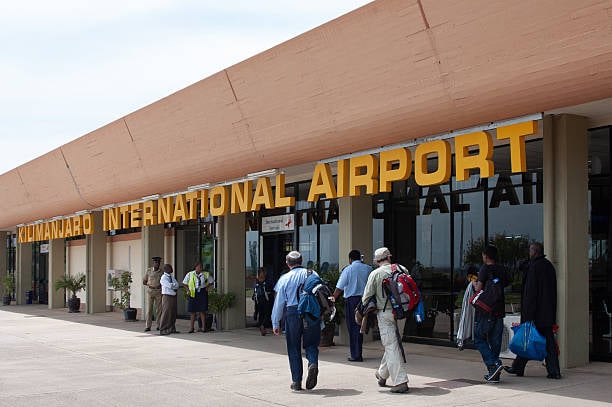
Reaching Tarangire is straightforward, making it an accessible start to your safari adventure.
Kilimanjaro International Airport (JRO)
Most international visitors fly into Kilimanjaro International Airport (JRO), located between the towns of Arusha and Moshi. From JRO, it's about a three-hour drive to the main gate of Tarangire National Park.
Road Transfers
The drive from Arusha, the main safari hub in northern Tanzania, to Tarangire takes approximately two to three hours on a paved road. This scenic journey allows you to see the Tanzanian countryside. Most visitors will access Tarangire National Park as part of a pre-booked safari package that includes a vehicle and driver-guide.
Domestic Flights
For those short on time, domestic flights are available from Arusha Airport (ARK) or Kilimanjaro International Airport to Kuro Airstrip, located inside the park. This significantly reduces travel time and offers spectacular aerial views of the landscape.
Conservation Efforts in Tarangire
The continued health of the Tarangire ecosystem relies on dedicated conservation efforts. These initiatives are crucial for protecting the park’s wildlife and ensuring its long-term sustainability. Key efforts focus on anti-poaching, community involvement, and scientific research.
Anti-poaching units patrol the park tirelessly to protect its elephant population and other vulnerable species from illegal hunting.
Furthermore, community-based conservation programs work with local villages to mitigate human-wildlife conflict, ensuring that the communities living alongside the park benefit from tourism and are empowered to protect their natural heritage.
Research projects, like the Tarangire Lion Project, monitor wildlife populations to inform management strategies and ensure a balanced and thriving ecosystem for generations to come.
FAQs About Tarangire National Park
Where is Tarangire Park Tanzania located?
Tarangire Park Tanzania lies in northern Tanzania, near Lake Manyara and the Ngorongoro Conservation Area, making it easy to access Tarangire National Park as part of the Northern Safari Circuit.
When is the best time to visit Tarangire National Park?
The dry season (June to October) is ideal for spotting large herds of elephants and buffalo, while the wet season (November to May) attracts countless bird species and newborn animals.
What animals can I see on a Tarangire safari?
Expect elephants, lions, leopards, cheetahs, wild dogs, buffalo, giraffes, and a large number of bird species during your Tarangire safari.
How do I get to Tarangire National Park?
You can access Tarangire National Park via a short drive from Arusha or flights from Kilimanjaro International Airport to Kuro Airstrip.
What makes the Tarangire ecosystem special?
Its permanent river (Tarangire River) acts as the primary source of fresh water, drawing wild animals during the annual dry season and creating a stunning landscape of baobabs and diverse wildlife.
Is Tarangire suitable for family safaris?
Yes. Many lodges cater to families, offering tailored Tarangire safari itineraries with shorter drives and child-friendly activities.
What other parks are near Tarangire?
Nearby attractions include Lake Manyara National Park, Ngorongoro Conservation Area, and Serengeti National Park, allowing visitors to explore the best of northern Tanzania.
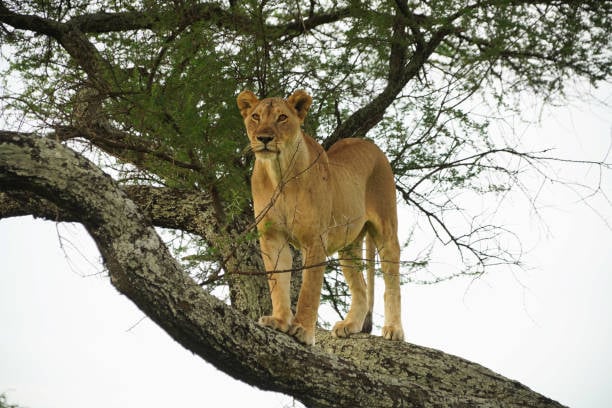
Summary
Tarangire National Park is an extraordinary destination that captures the very essence of an African safari. Its iconic baobab trees, massive elephant herds, and the life-giving Tarangire River create a landscape of breathtaking beauty and dramatic wildlife encounters.
Whether you visit during the teeming dry season or the verdant wet season, the park offers a deeply rewarding and authentic connection to the natural world.
From thrilling game drives and serene walking safaris to luxurious lodges and rustic campsites, Tarangire caters to every type of traveler. As a cornerstone of the northern Tanzania safari circuit, it offers a perfect introduction or a magnificent deep dive into one of the most incredible wildlife sanctuaries on Earth. Embark on a journey to Tarangire and discover a wild paradise that will leave an indelible mark on your soul.

